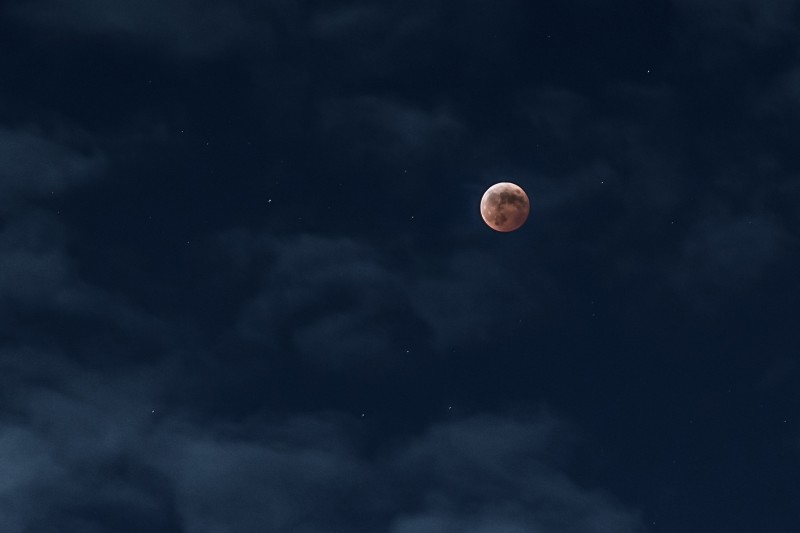For the first time in three years, Japan witnessed a total lunar eclipse on October 8, 2014. Everywhere across the island nation, friends and family gathered outside under the open sky and turned their gazes upward.
According to the National Astronomical Observatory of Japan, the total eclipse could be seen across the entire archipelago, with the exception of Ishigaki Island (southwest of Kyushu).
A partial lunar eclipse occurs when the sun, the Earth, and the moon are arrayed imperfectly on a line. Like total lunar eclipses, they are only visible during a full moon. A total lunar eclipse, however, requires that all three bodies are aligned perfectly.
In a total lunar eclipse, the Earth’s shadow totally blocks the sunlight, creating an umbra—the innermost and darkest part of a shadow—where the light source is completely blocked by the occluding body. An observer in the umbra then experiences a total eclipse.
The total lunar eclipse on October 8 lasted for nearly an hour, providing everyone with plenty of time to observe it.
People in Japan came up with a variety of unique ways to watch the eclipse. “Lunar eclipse yoga,” for instance, was quite popular.
東京ミッドタウンでは今年も皆既月食の日にあわせ、明日10/8(水)「月見ヨガ」を特別開催! 部分月食の始まりから皆既月食、部分月食の終わりまで皆既月食を観測できるのは2011年以来3年ぶり。http://t.co/JDtp9krxl3 pic.twitter.com/VJMyQLqlQM
— VOGUE JAPAN (@voguejp) October 7, 2014
In Tokyo’s Midtown district, a group of people gathered to participate in open-air “lunar eclipse yoga.” The event was timed to start at 7:30pm and lasted for one hour, the length of the eclipse.
Yoga is usually practiced indoors with a small group of people, making such a large number of yoga fans in one place outside quite the spectacle. About 560 people joined in.
ミッドタウンの月見ヨガ、肌寒いかなとおもったけどよかった 560人集まったんだって すごい
— mayols (@may_ols) October 8, 2014
While I thought it might be cold doing it outdoors, gathering with 560 people was great!
The Tokyo Sky Tree, Japan's tallest building, which is lit up by the blue LED lights made famous by the recent Japanese Nobel Prize winners, also played a role in the eclipse festivities.
東京スカイツリーのてっぺんをかすめる皆既月食(19:57撮影) pic.twitter.com/44pydWCVLl
— てつ (@tetsu_skytree) October 8, 2014
Tokyo Tower, another prominent (and somewhat nostalgic) landmark got in the act.
Calling itself “The Moon’s Diamond Veil,” the lower half of Tokyo Tower lights up in pink lights at least once a month to mark the full moon. For the eclipse, the LEDs on the upper half of the Tokyo Tower were extinguished and lit instead by moonlight. To create a romantic atmosphere, people inside the tower also lit candles in nearly 100 of the building's windows.
今夜は皆既月食。みるみるうちに月が変化していきます。 ピンク色の東京タワーと月食がとても綺麗です。 #皆既月食 pic.twitter.com/u2eMKO1RdS
— ❀Taki Hirata❀ (@kaorucojp) October 8, 2014
I’m watching the total lunar eclipse. The pink lights of the Tokyo Tower and the eclipse make a beautiful sight.







